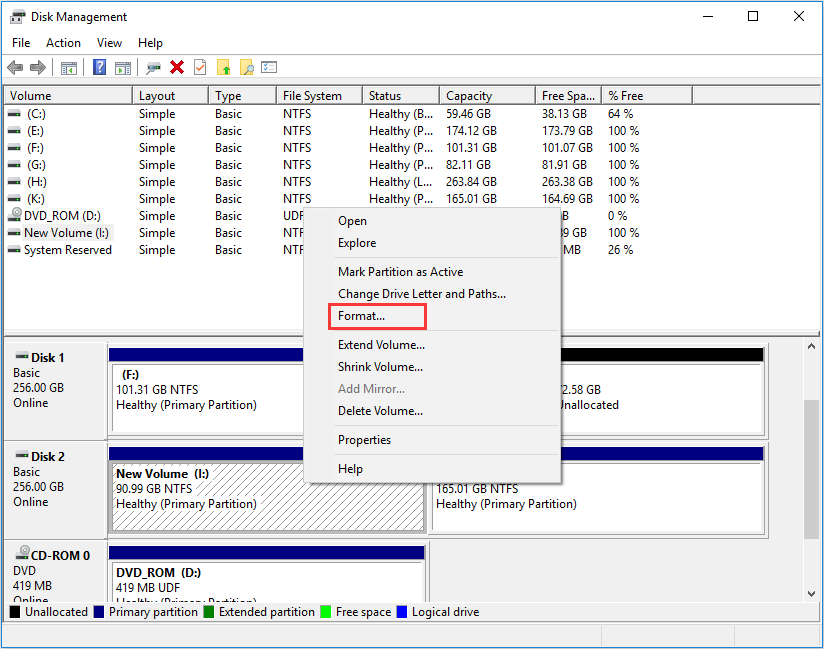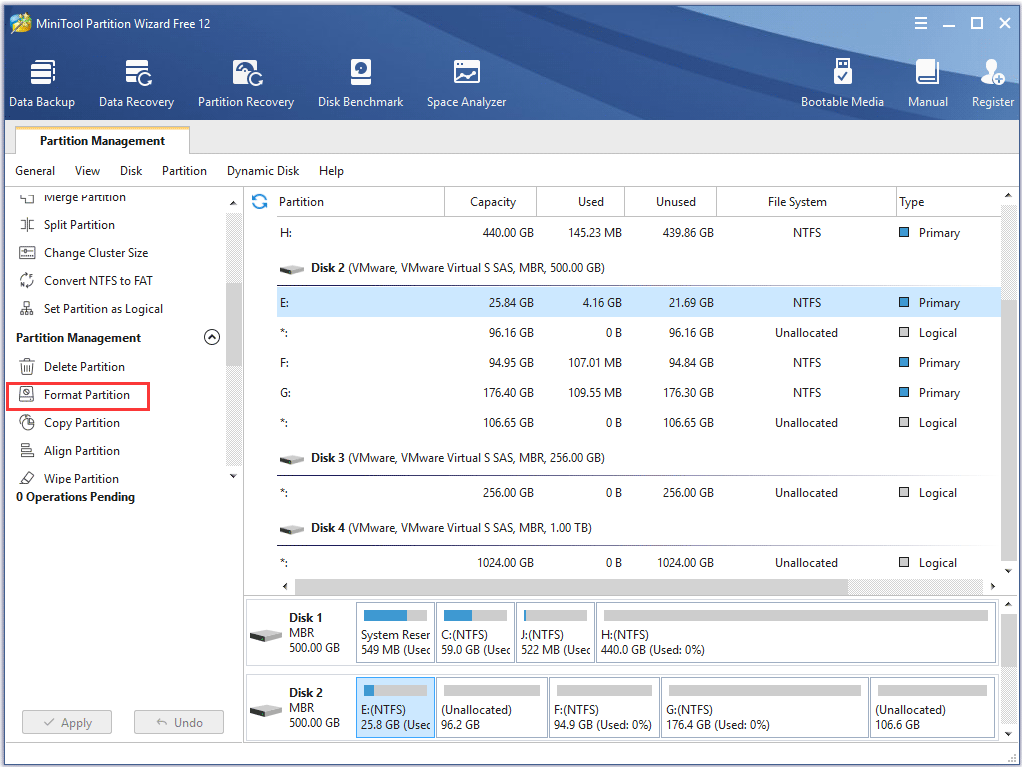Ssd And Hdd Drives
May 31, 2019
Format Hdd After Installing Ssd
Format SSD drive during the Windows installation process. First, create a Windows installation disk. Disconnect the old HDD from computer, insert the installation disk into computer, power on computer and set it to boot from the installation disk. Formatting (actually re-formatting) a solid state drive (SSD) is a quick and simple process to restore the drive to a clean state, similar to when the drive was new. If you are looking to sell or donate your old drive, you will want to not only reformat your drive, but also erase all the data in a separate action.
- At first, Create a folder called “Download” on another drive.
- Now, Open This PC.
- Then, Right click on Download folder and go to properties.
- After that, Go to location tab.
- Click on Move and choose the “Download” folder that you have created on another drive.
- Click on Apply and OK.
- First of all, Open RUN by pressing Win + I on the keyboard.
- Then, Type devmgmt.msc and hit enter. It will open device manager.
- Now, Expand disk drive option from windows device manager.
- Double-click on SSD and go to policy tab.
- Uncheck “Enable write caching on the device.”
- Click on OK.
- At first, Open RUN, type sysdm.cpl, and hit enter.
- Now, Go to System Protection tab.
- Select the drive (SSD) and click on Configure.
- Now, Check Disable System Protection.
- Click on OK.
- Open the start menu, type cmd, right click on command promt and choose run as administrator.
- Now, Type the following command and hit enter.
Maybe, You are planning to buy an SSD. But, Do you know what to do after that? Okay, This article explains what you should do after installing SSD on your computer.
Using traditional hard disk as the primary partition is a pain now. It’s slower and not modern standard anymore. That’s the reason many people are replacing the hard drive with a modern SSD or using SSD as the primary partition and hard disk as primary storage.
SSDs are more expensive than a hard drive. You may find 1 TB hard disk at $30. But, 1 TB SSD can be more than $350. So, Many users prefer 128 GB or 256 GB SSD. They install Windows on SSD and use the hard drive as primary storage. It is a smart decision indeed. By the way, there are more to do.
Things to Do after Installing an SSD
You may find so many weird myths about SSD. People may suggest you do many strange things. But, These are not necessary for a modern SSD. By the way, If you have already bought the solid state drive and installed it on your PC, you can consider a few things to do as next steps. It will help to get maximum from your SSD.
1. Enable AHCI
After installing SSD on your PC, you may have to enable AHCI manually from BIOS/UEFI. It will ensure that Windows will support the SSD correctly. To know how to enable it, you may visit your motherboard manufacturer website. By the way, it is straightforward to enable. You can press del/F2/F10/F12 while your PC is booting to go to BIOS dashboard. From there find and change the storage options.
2. Move/Install Games to Another Drive
PC games can be massive in size. There are games that take 60/80 GBs or even more space. If you already have installed games, move them to another drive. In the future, Install games on the hard drive instead of SSD.
3. Move OneDrive to Another Location
As SSD is expensive, you may have bought 128 GB or 256 GB. You may be using it as the primary partition. By default, OneDrive should be on your primary drive. It takes a lot of space. So, You may want to move it to your hard drive. It will save a lot. To do it, Read how to change OneDrive location.
4. Change Download, Documents, Desktop, Music, Pictures Location
You save so many things in these folders. Notably, The download folder is a big deal. Sometimes, It can be larger than our expectation. Because we download so many things that we don’t count. That’s why you should move these folders to somewhere else. It will save space of SSD. To do it, follow these instructions.
By this way, change documents, desktop, music, pictures, etc. folder location.
5. Change Pagefile Location
Maybe you know about pagefile. It is similar to the virtual memory. It may take huge space in your storage. You have the option to disable it. But, It may affect PC performance. So, I suggest you to change the pagefile location from SSD to hard disk.
6. Disable Prefetch and Superfetch (Optional)
Superfetch and prefetch are essential for launching common applications, windows quickly. But, It stores data on your physical memory and virtual memory on SSD. It takes space and increases writing activity. As SSD has less writing capability, disabling prefetch and superfetch can help you a lot. It will increase the SSD lifespan. By the way, It is optional. Modern SSDs are powerful enough. So, You may ignore it if you want.
7. Configure Write Caching (Optional)
After installing an SSD, you also should disable write caching. But, If you find your PC extremely slow after disabling it, enable write caching again. If you see disabling this caching option doesn’t affect performance, leave it disabled.
To do it, follow these instructions.
8. Disable System Restore (Optional)
Of course, System restore is very useful. But, It may take valuable space that you may need in the future. So, If system restore is not that much necessary for you, you may disable it or reduce system restore storage usage. To disable it, follow these instructions.
9. Enable Trim
The trim feature should be active by default. But, You still should try to enable it to make sure it is active. To do it,
It will enable trim.
10. Enable High-Performance Mode (Optional)
People often say high-performance mode will help you to get maximum performance from SSD. So, You can enable it. To do it, Go to Control PanelSystem and SecurityPower Options. Now, Select High Performance.
These are the things to do after installing an SSD. There are also some myths about SSD. You should not care about them. Modern SSDs are capable of many things and also have long-lasting capabilities. So, You can ignore the optional stuff. But, You should do the must doing things.
Featured Image Credit: Intel Free Press/Flickr



